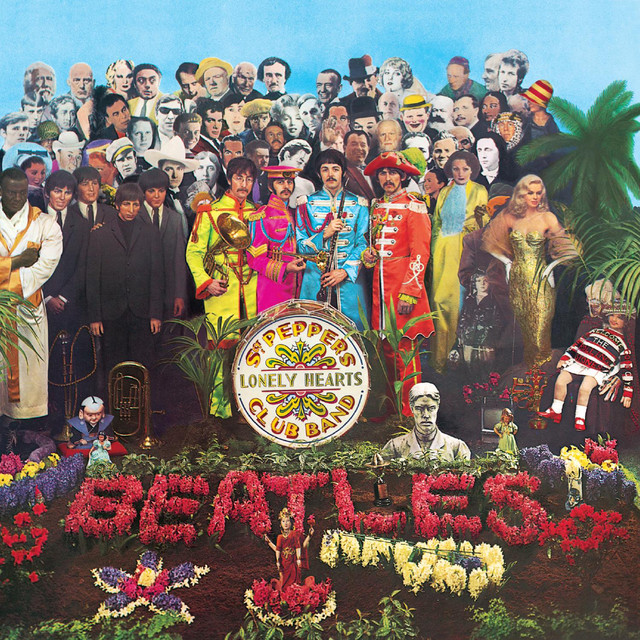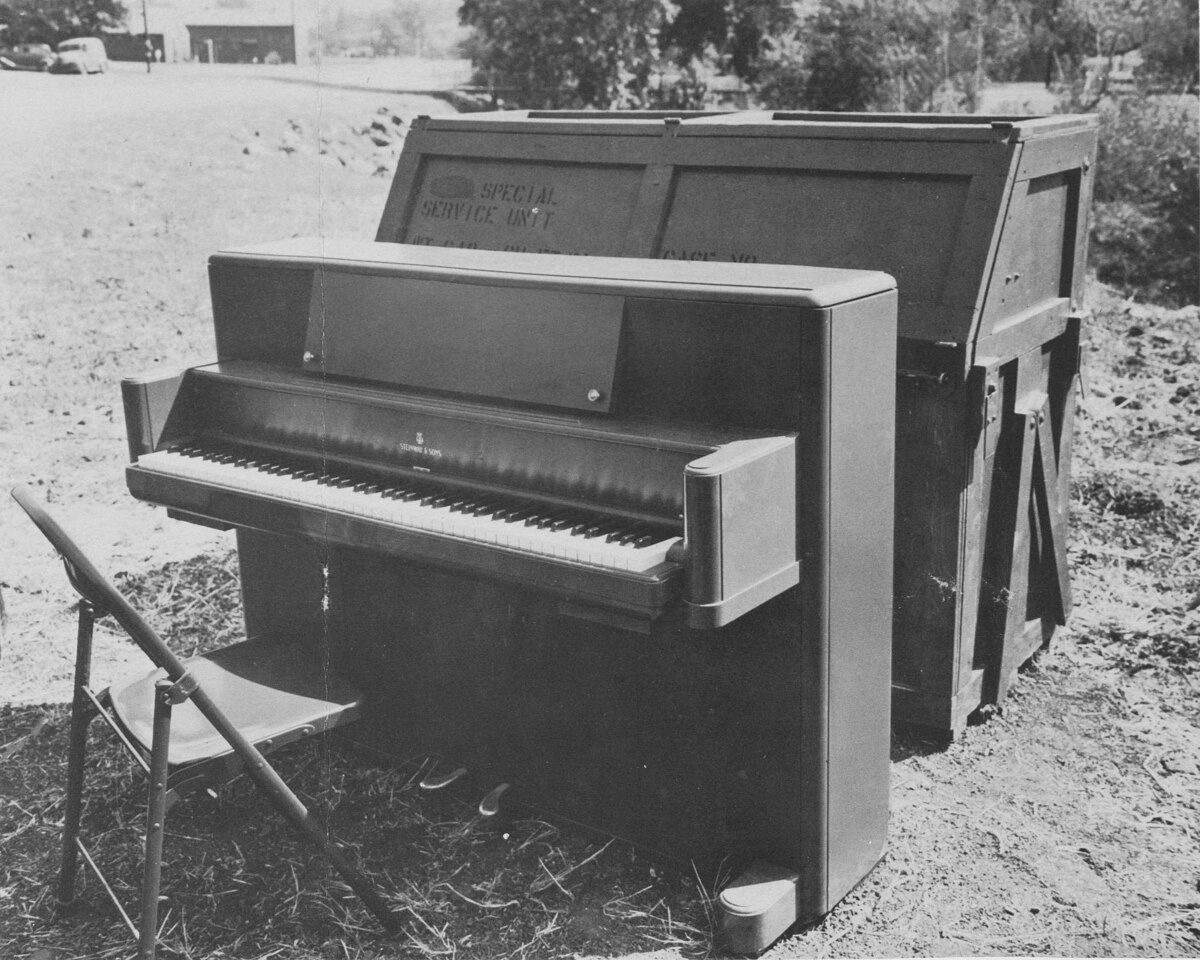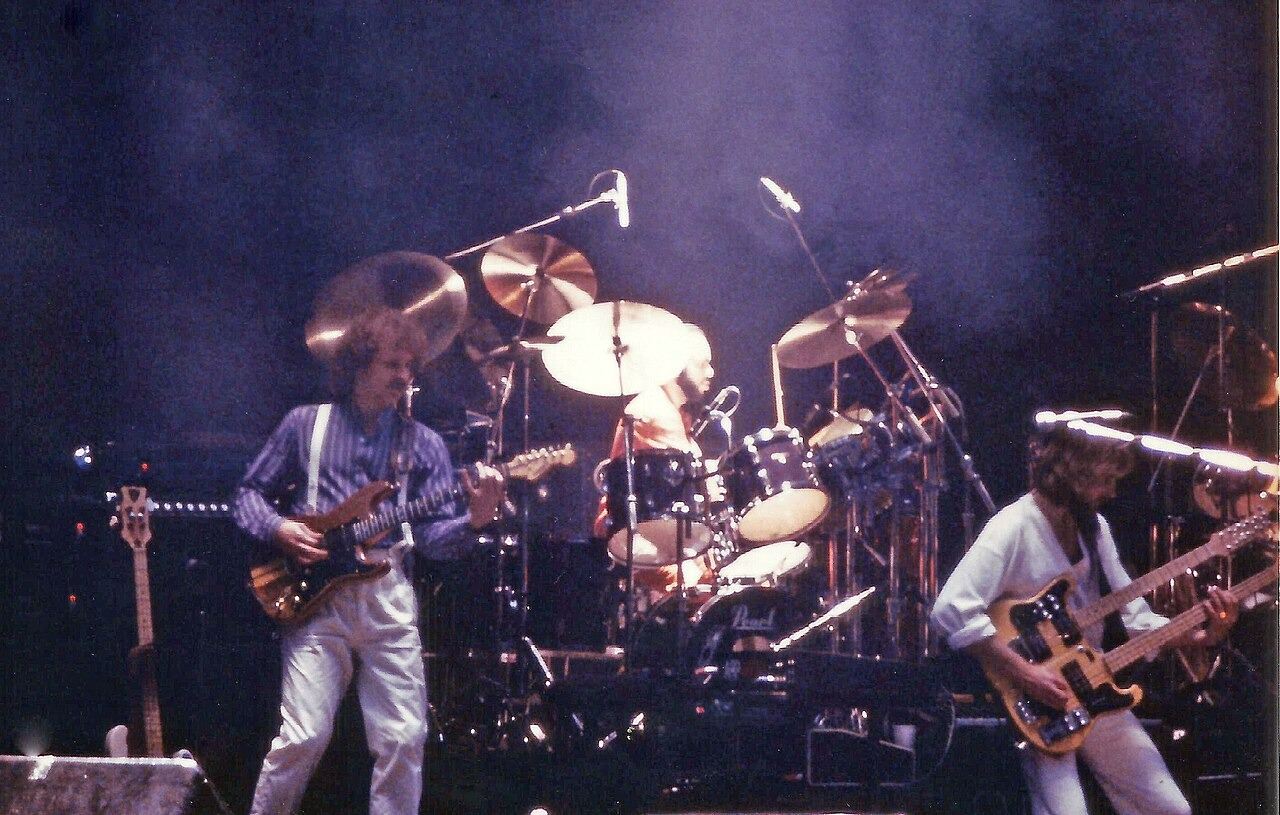
The 1970s stand as a pivotal yet often overlooked decade in automotive history. Automakers wrestled with fuel costs and emission rules while trying to keep cars appealing. The results? Some truly weird and wonderful machines.
This isn’t about Camaros or Mustangs. Those get plenty of attention already. Instead, meet the oddballs that deserve a second look. These cars tell the story of an industry figuring things out on the fly. Ready for a trip to the funkier side of automotive history?
12. 1970 AMC Hornet – Exterior
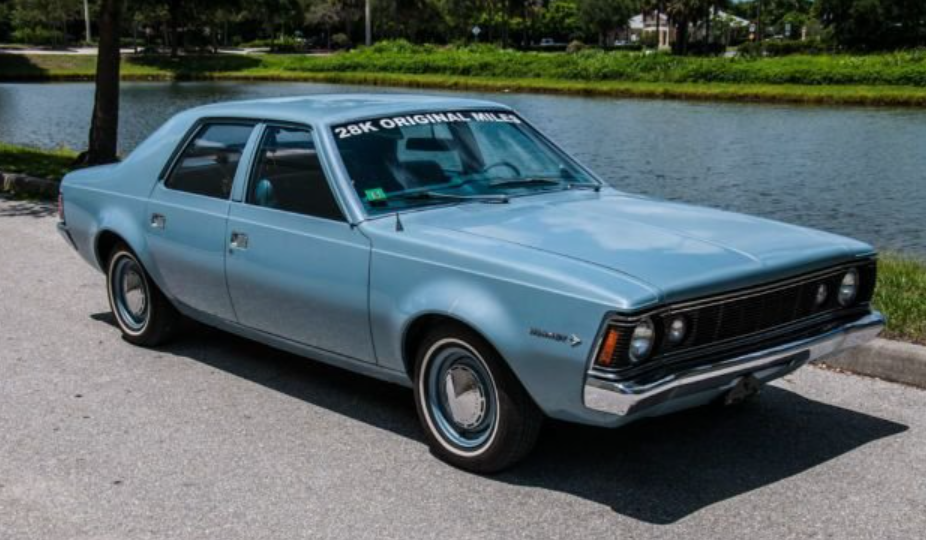
The Hornet rocked a “funky” profile that turned heads on city streets. AMC’s designers clearly weren’t afraid of standing out. At just 179 inches long, this compact wonder navigated urban chaos with ease. Flash forward a few years and its bones would evolve into the more upscale Concord.
Think of the Hornet as that reliable friend who shows up to help you move when everyone else is “busy.” Nothing flashy, but always there when needed. Its exterior design adapted and evolved through the decade like a chameleon in plaid pants. Engine options included a decent inline-6 (128 hp) or a more muscular 5.0L V8 (213 hp) for those in a hurry.
The rear-wheel drive setup and reasonable 2,745 lb weight gave it surprisingly balanced handling. Not sports-car nimble (what was in the ’70s?), but certainly not the boat-like experience many competitors offered.
1970 AMC Hornet – Interior
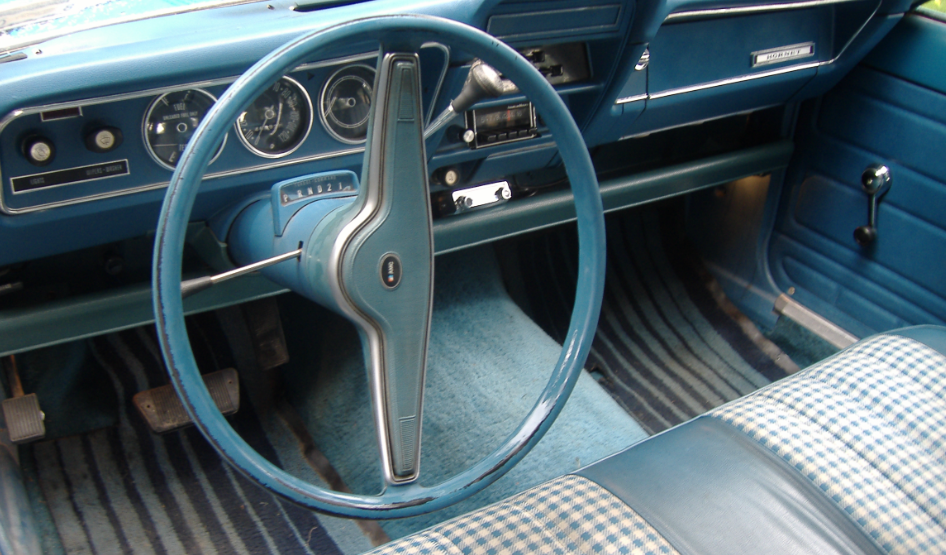
When other car makers confused drivers with trendy but impractical layouts, the Hornet’s cabin offered straightforward controls exactly where you’d expect them. The cabin offered space for five (though your rear passengers might not speak to you after long trips). AMC raided the Jeep parts bin for many interior components – smart cost-cutting that actually worked.
Controls sat exactly where you’d expect. No puzzles to solve. Base models featured vinyl seating that could survive nuclear winter, while fancy-pants higher trims got cloth upholstery. Storage space? Adequate. Perfect for groceries, weekend bags, or your massive 8-track collection.
Starting at $1,995, the Hornet delivered reasonable zip while sipping fuel at a not-terrible rate. The fact that AMC survived the 1970s at all was partly thanks to this practical little warrior. Many car buffs now recognize the Hornet was one of the best undercover 1970s muscle cars that embarrassed flashier rivals when equipped with the V8. It was a crossover before “crossover” was cool – like discovering your awkward uncle was actually a rock star in the ’60s.
11. 1970 Ford Maverick – Exterior
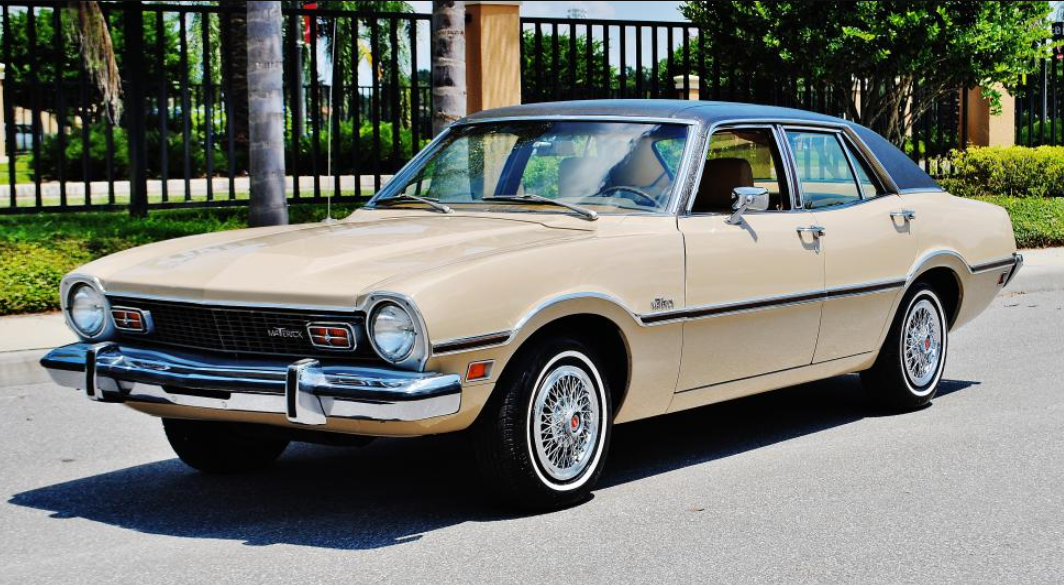
Ford took simplicity and ran with it. Clean lines, zero frills, and an oval grille that became the car’s calling card. Ford skipped the fastback version enthusiasts begged for, sticking with a basic two-door shape that screamed “sensible shoes” in automotive form.
Paint options included delightfully weird ’70s colors like “Anti-Establish Mint” and “Thanks Vermillion” (because nothing says rebellion like driving a budget Ford in mint green). The Maverick navigated crowded streets with ease, partly because it lacked the excessive chrome jewelry common on larger models.
Under the hood lurked a 170 cubic inch (2.8L) straight-six making a modest 105 hp, with an optional 200 cubic inch (3.3L) version available for the speed demons. Top speed? About 87 mph – fast enough to get tickets, but not fast enough to outrun them.
1970 Ford Maverick – Interior

If minimalism had a poster child, the Maverick’s interior would be it. Bench seats came standard (bucket seats were for fancy folks), and sound insulation was apparently an afterthought. The dashboard featured only the most essential gauges – speed, fuel, and “something’s probably wrong.”
Storage? Just enough for a road map and your expectations. Controls offered satisfying clicks despite their budget construction. While competitors added padded surfaces and fake wood, the Maverick stayed true to its no-nonsense identity. It was the ’70s car equivalent of that friend who shows up to dinner in jeans when everyone else dressed up.
The standard 3-speed manual shifted like stirring thick pudding, while the optional automatic took the drama out of driving. Fuel economy hit 20-25 mpg – practically hybrid territory for the era. Ford sold a staggering 578,000 units in the first year alone. Turns out Americans wanted simple, affordable cars that just worked. Fancy that!
10. 1972 Ford Torino – Exterior
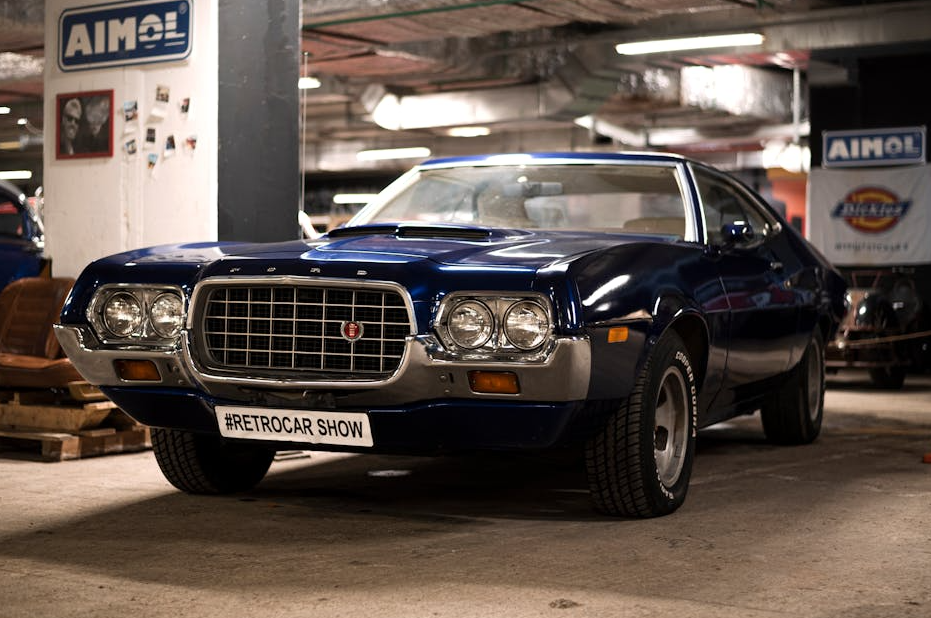
The Torino looked like the 1960s and 1970s had a design baby. Available as a sedan, hardtop, convertible, or wagon, it wore different outfits for different crowds. Up front, a chunky grille and dual headlights announced its arrival with all the subtlety of a game show host.
Long hoods emphasized the power lurking beneath, while character lines ran along the sides like pinstripes on a business suit. Station wagon models got fake wood paneling because nothing said “suburban sophistication” in the ’70s like pretending your car was partially made of trees.
Engine choices ranged from sensible six-cylinders to rowdy V8s up to 429 cubic inches. Driving one felt like piloting a couch – comfortable but not exactly nimble. The Torino handled curves the way most people handle public speaking: cautiously and with noticeable sweat.
1972 Ford Torino – Interior

Family-hauler comfort met muscle-car attitude inside the 1972 Ford Torino’s surprisingly spacious cabin. Base models offered vinyl seating and minimal frills (think “utilitarian chic”), while Gran Torino versions went upscale with plush cloth seats and woodgrain accents; fake, obviously – trees were expensive.
The Torino gave passengers plenty of shoulder room – great for families, awkward for first dates. Wagons could swallow a ridiculous amount of cargo with the rear seats folded. The climate controls and radio placement suggested someone actually thought about where humans put their hands. Revolutionary!
Most buyers opted for automatic transmissions because shifting gears yourself was so 1960s. Braking performance was… present. Ford sold over one million Torinos in 1972 alone – not bad for a car that couldn’t decide if it was a family hauler or muscle car.
The Torino later achieved TV stardom in “Starsky and Hutch,” where its bright red paint and white stripe became more recognizable than some of the actors. Talk about a successful career change!
9. 1971 Volkswagen 411/412 – Exterior

VW decided its budget reputation needed an upgrade. The result? This oddly formal-looking car with standard metallic paint – ooh, fancy! Unlike the cute-as-a-button Beetle, the 411 wore an angular suit and serious expression, like a Beetle that got an accounting job.
Available as a two-door, four-door, or three-door wagon, this VW’s proportions seemed slightly off – perhaps because the engine still lived in the rear but under a conventional trunk lid. The front trunk offered decent storage, creating a car with identity issues. Was it coming or going? Even it didn’t seem sure.
Power (a generous term) came from a rear-mounted 1.7L flat-four making 80 hp on a good day, downhill, with a tailwind. The MacPherson strut front suspension helped handling, but this was no sports car. Steering felt light because there was basically nothing over the front wheels.
1971 Volkswagen 411/412 – Interior
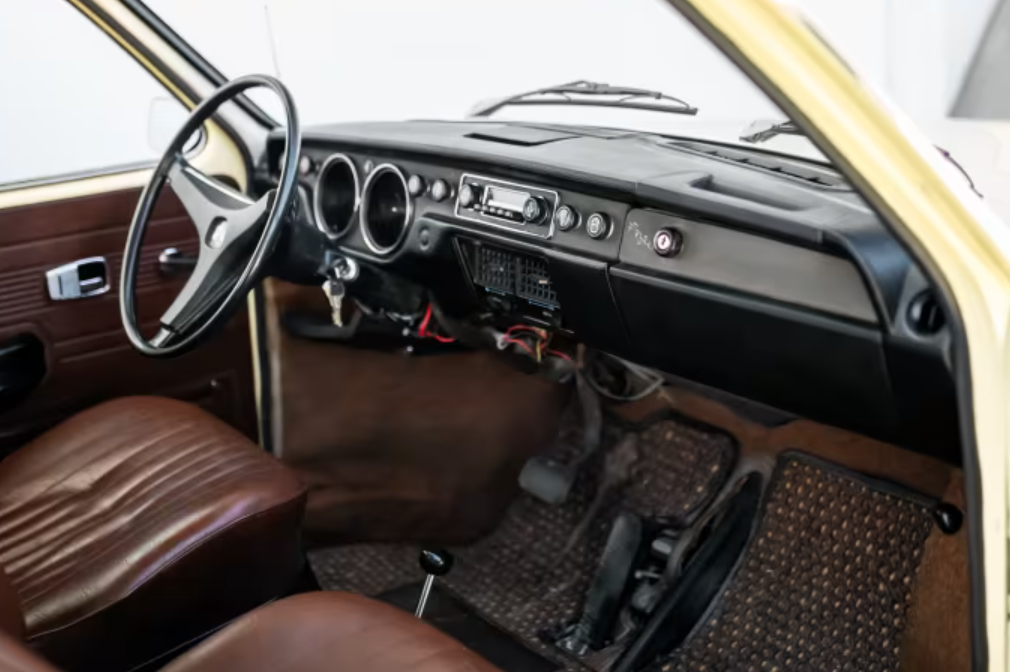
Wall-to-wall carpeting and padded seats welcomed VW owners to a level of comfort unimaginable in the spartan Beetle. Seating surfaces actually had padding (what a concept), and the dashboard offered comprehensive instrumentation beyond “speed” and “gas.” Fancy gauges aside, this still felt like a VW, just one wearing its Sunday best.
Rear passengers enjoyed decent space despite the engine taking up real estate behind them. The driving position offered excellent visibility, perfect for watching other cars pass you. Climate controls worked reasonably well, which for an air-cooled VW meant “sometimes too hot, sometimes too cold, never just right.”
The optional automatic transmission turned an already slow car into something that moved like a sleepy tortoise. Fuel economy remained good – a hallmark of VW engineering. Volkswagen pulled the plug in 1974 after lukewarm sales. The 411/412 was basically VW’s awkward teenage phase – trying so hard to be grown-up that it lost its charm.
8. 1973 Pontiac Astre – Exterior
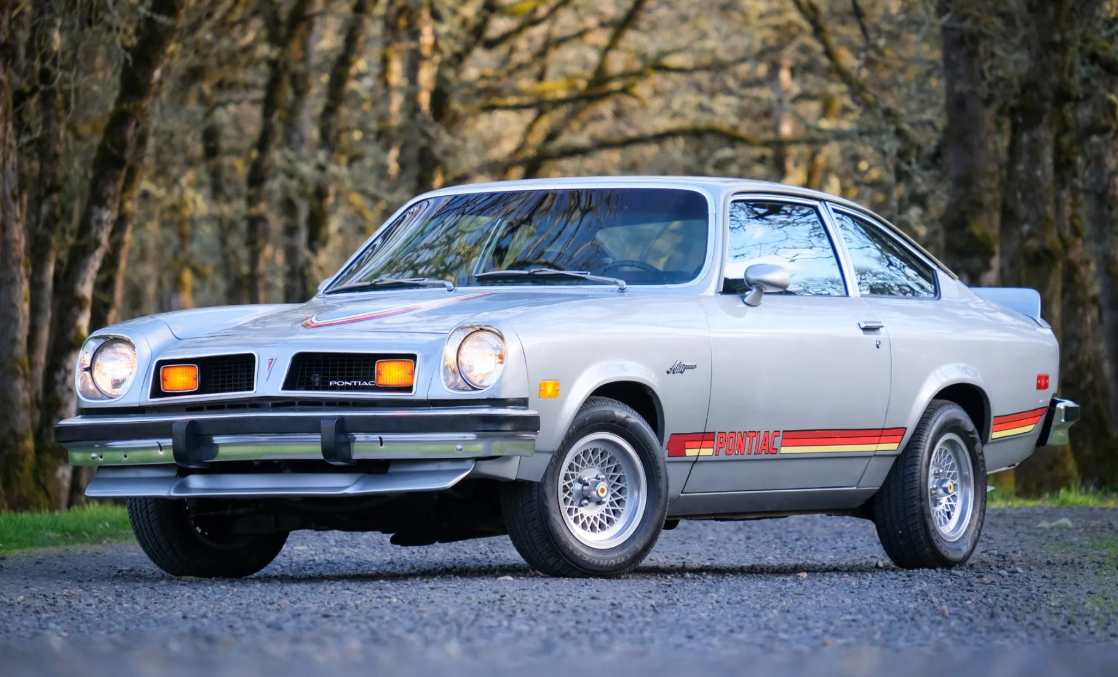
The Astre was Pontiac’s answer to a question nobody asked: “What if the Chevrolet Vega wore a slightly different outfit?” Designers added a split grille and Pontiac badges, then called it a day. It’s like when a restaurant adds parsley to a bland dish and charges $5 more.
Available as a two-door sedan, hatchback, or wagon, the Astre maintained the Vega’s compact 97-inch wheelbase. Its profile showed sporty proportions that promised performance the car couldn’t deliver. Pontiac basically put lipstick on GM’s economy-car pig and hoped no one would notice the oinking.
Power came from a 2.3L four-cylinder aluminum block engine that made between 72-85 hp, depending on which yearand how optimistic the marketing department felt. Handling was predictable in the same way Tuesday follows Monday – technically correct but nothing to get excited about.
1973 Pontiac Astre – Interior
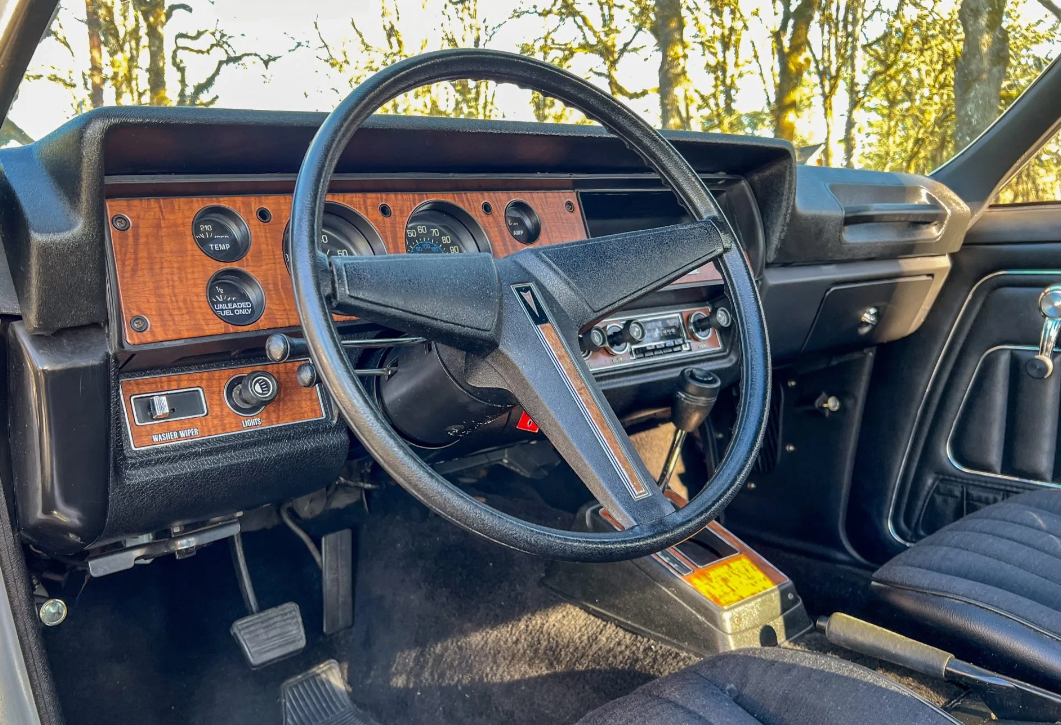
Pontiac tried. They really did. Different seat patterns, unique door panels, and Pontiac-specific gauge faces attempted to justify the price premium over a Vega. It’s like putting a different collar on the same dog and calling it a new breed.
Front passengers had adequate space, while rear-seat occupants needed to be either children or contortionists. Storage options included a glove box that could hold actual gloves (revolutionary!) and door pockets perfectly sized for gum wrappers. Hatchback and wagon versions offered decent cargo flexibility.
Transmission choices included a four-speed manual or three-speed automatic, neither of which made the car exciting to drive. Fuel economy averaged 20-25 mpg, which was one of the few things owners could brag about. The Astre never caught on, becoming one of Pontiac’s shortest-lived models.
Its greatest contribution was providing a cautionary tale about badge engineering. The Astre was essentially the automotive equivalent of a cover band – technically hitting all the notes but lacking any original soul.
7. 1973 Oldsmobile Omega – Exterior
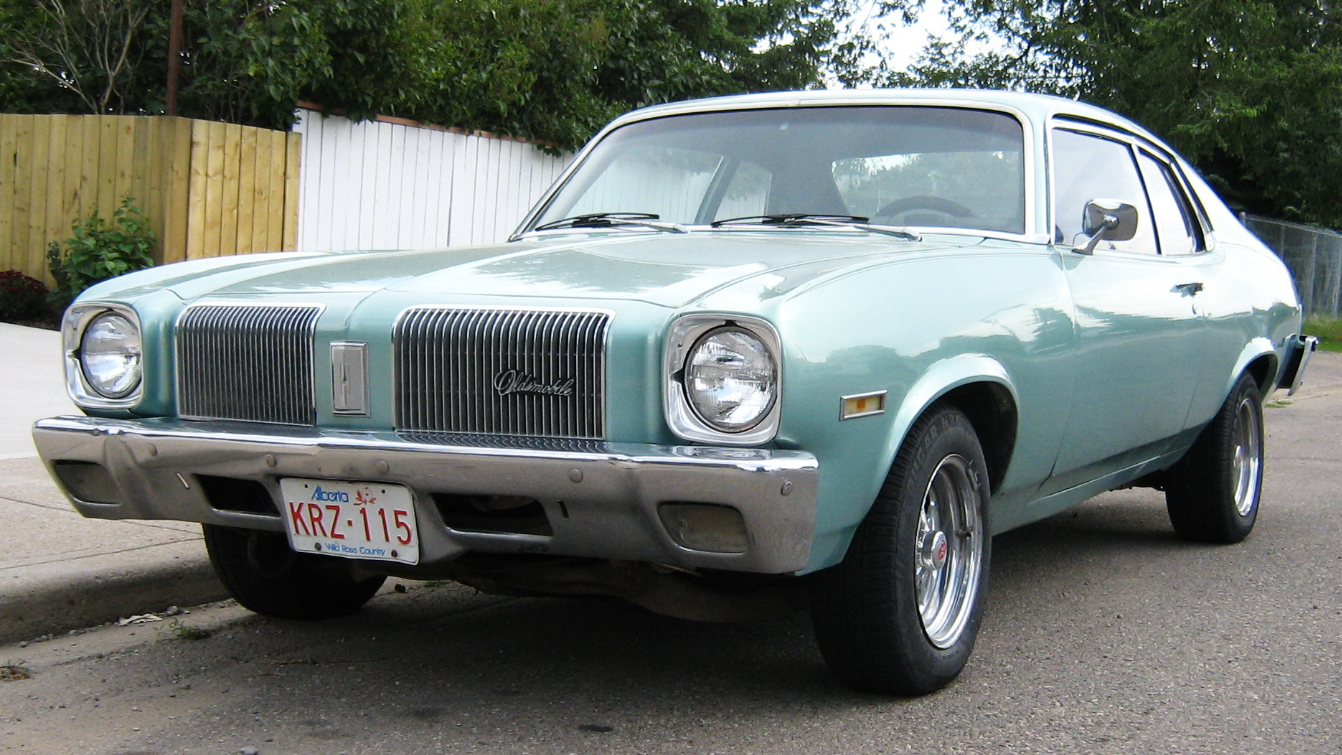
Another example of GM’s “same car, different badges” strategy. The Omega was basically a Chevrolet Nova in a slightly nicer suit. Designers positioned the headlights higher than the Nova’s and added an Oldsmobile grille. Boom – luxury! Or so they hoped.
Side moldings and trim pieces attempted to create visual distinction, but the family resemblance remained obvious. Available as a two-door coupe or four-door sedan, the Omega tried to present a more upscale image than its Chevy cousin. It’s like when fraternal twins dress differently but still have the same face.
Engine options ranged from a basic six-cylinder to various V8s of increasing thirst. The Omega inherited the Nova’s road manners – comfortable but uninspiring. Steering and braking matched other X-body models, meaning they existed and generally worked when asked.
1973 Oldsmobile Omega – Interior

Oldsmobile tried to justify the price hike over a Nova with fancier seat patterns, door panels, and gauges. The differences were real but subtle – like comparing store-brand versus name-brand cereal. Different boxes, similar contents.
Five adults could fit inside, though not necessarily happily. Some trim levels offered bucket seats with improved side support – perfect for the cornering capabilities the car didn’t actually have. Materials attempted to bridge the economy-luxury gap but landed somewhere in the middle, like an awkward teenager at a school dance.
Most buyers chose automatic transmissions because Oldsmobile customers weren’t the shifty type. Fuel economy varied dramatically with engine choice – V8 models drank fuel like college freshmen at their first party. Critics questioned whether the minimal differences justified the premium pricing.
A retired Olds engineer once admitted, “Our challenge wasn’t creating something different – it was convincing customers they were getting something special for the extra cash.” Honesty from the ’70s auto industry? Now that’s truly rare!
6. 1975 Ford Granada – Exterior

Ford created the automotive equivalent of a polyester leisure suit – formally styled but lacking true sophistication. The Granada’s upright profile and quad headlamps flanking a vertical grille tried desperately to channel European luxury. Talk about fake it till you make it!
Chrome trim highlighted key body lines without going full disco ball. Available as a two-door coupe or four-door sedan, many were ordered with vinyl roof treatments because nothing said “class” in the ’70s like fake convertible roofs that never actually opened.
Under that long hood lurked engines ranging from wheezy inline-sixes (81 hp) to still-not-very-impressive V8s (about 150 hp in top specification). The soft suspension prioritized comfort over handling, leading to cornering that resembled a water bed during an earthquake.
1975 Ford Granada – Interior

Plush seating surfaces in both cloth and vinyl options greeted 1975 Ford Granada owners. The dashboard featured a logical layout with woodgrain accents on higher trims that looked about as real as a three-dollar bill. Door panels got padded armrests – because luxury is measured in cushioning.
Rear seat passengers enjoyed decent legroom and comfortable seating. The sound insulation exceeded Ford’s standard models, creating a quieter environment to enjoy your 8-track of Barry Manilow’s greatest hits. Climate controls actually worked well enough to be forgettable – the highest praise for ’70s HVAC.
Most buyers chose automatic transmissions because shifting gears manually would have clashed with their leisure suits. Ford’s marketing campaign famously compared the Granada to the Mercedes-Benz 280, which was like comparing microwave pizza to authentic Italian cuisine. Performance was adequate but uninspiring, with handling that prioritized comfort over athleticism – perfect for cruising boulevards while showing off your new leisure suit.
5. 1977 Datsun 200SX – Exterior

Japanese styling went wild with the 200SX. Sharp angles and peculiar proportions created a car that looked like it was designed during an earthquake. The front end featured rectangular headlights and a slim grille that seemed to be perpetually surprised by its own existence.
Body panels displayed more character lines than a Shakespeare play. The fastback profile limited rear visibility to basically “is that a mountain behind us or a semi truck?” Bumper integration was decent for the era, when most cars wore battering rams to meet safety regulations.
Power came from a 2.0-liter four-cylinder making 97 horsepower – enough to eventually reach highway speeds if you packed a lunch for the journey. Handling favored stability over agility, with body roll that would make a sailboat jealous. Rust protection seemed optional rather than standard.
1977 Datsun 200SX – Interior

The cockpit-style layout suggested sportiness the drivetrain couldn’t deliver – like wearing running shoes with a business suit. The driver got a tachometer and auxiliary gauges angled their way, as if to say, “Look how sporty we are!”
Back seats worked better as additional luggage space than for actual humans. The dashboard featured logical controls but utilized materials that felt borrowed from discount toys. Storage compartments showed practical Japanese thinking, including spots for your cassettes and driving gloves.
Transmission options included a four-speed manual that clicked through gears like a ballpoint pen or a three-speed automatic that sapped what little power existed. Fuel economy remained impressive, averaging 25-30 mpg when most American cars were gulping fuel like frat boys at a keg party.
Later 200SX generations significantly improved the formula, proving Datsun learned from its mistakes. This first attempt was like watching the early episodes of a TV show before the writers figured out the characters – awkward but necessary for the development of something better.
4. 1975 Mercury Bobcat – Exterior
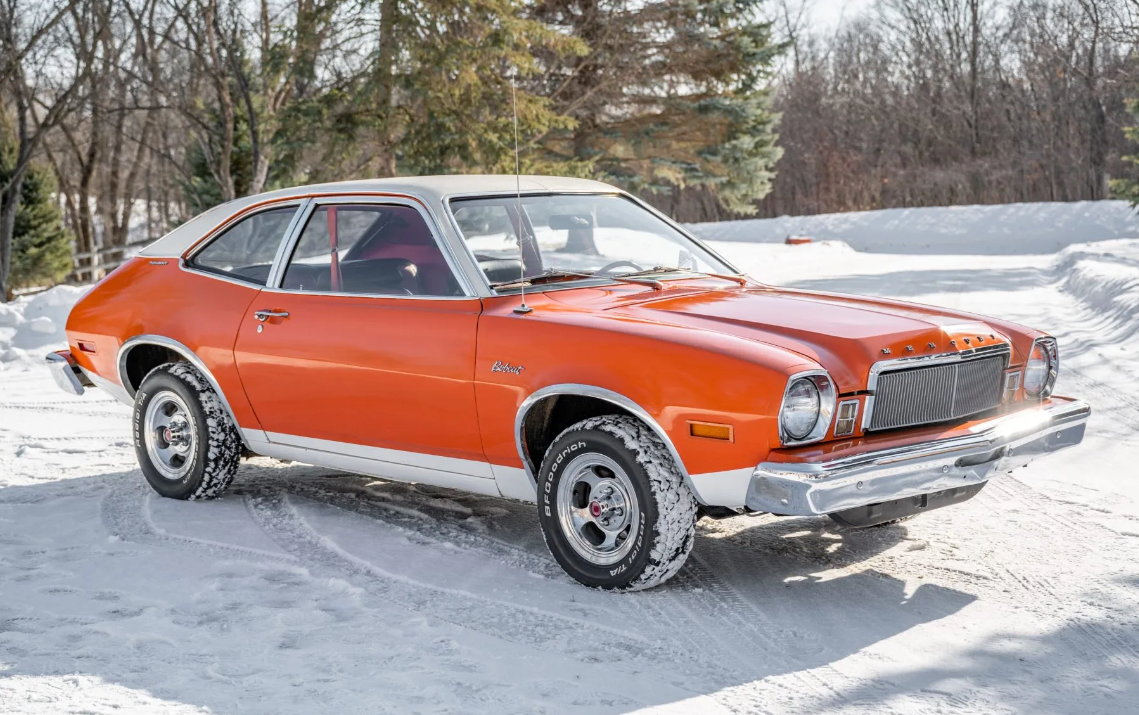
Mercury took Ford’s problem-prone Pinto, added a different grille, changed the taillights, and called it luxury. It’s like putting a bow tie on a house cat and calling it a tiger. The front end featured a boxier hood line and more formal appearance than its Ford cousin – changes that fooled approximately no one.
Available as a two-door sedan or three-door wagon, the Bobcat’s dimensions matched the Pinto exactly. Mercury’s designers basically played automotive Mr. Potato Head, swapping parts without changing the underlying structure. Badge engineering at its most transparent.
Engine choices included inline-four options ranging from 2.0 to 2.8 liters – none of which could be described as “spirited.” Performance remained modest across all variants. Handling was predictable if uninspiring, with cornering that would make a sloth look energetic.
1975 Mercury Bobcat – Interior

Mercury tried to justify the price premium over a Pinto with nicer seat patterns and door panels. The dashboard remained identical to the Pinto’s with a few Mercury badges slapped on – about as convincing as a fake mustache at a witness protection program.
Front seats provided reasonable space, while rear quarters offered a crash course in claustrophobia. Storage capacity proved adequate in sedans and somewhat useful in wagons. Material quality attempted to feel more premium but landed somewhere between “economy” and “slightly less economy.”
Buyers could choose manual or automatic transmissions, with fuel economy averaging 20-25 mpg. Sales numbers tell the real story: Ford sold 1.3 million Pintos while Mercury couldn’t even move 225,000 Bobcats. Sometimes the public actually recognizes when they’re being sold last week’s leftovers at premium prices.
The 1975 Mercury Bobcat stands as a perfect example of failed badge engineering – when minimal differences fail to create meaningful distinction. It’s the automotive equivalent of generic cereal in a fancier box, sold at name-brand prices.
3. 1978 Buick Century and Oldsmobile Cutlass Aeroback – Exterior

GM decided American buyers wanted European-style hatchbacks, despite zero market research supporting this notion. Both Buick and Oldsmobile versions featured a sloping rear roofline ending in what can only be described as a confused trunk/hatch hybrid. The design looked like someone started drawing a sedan, got bored, and finished with a hatchback.
Front styling maintained brand identities, with Buick and Oldsmobile preserving their signature grilles. Available in two-door and four-door versions, these cars represented GM’s equivalent of serving sushi at a steakhouse – a bold cross-cultural experiment nobody ordered.
Engine options included everything from a meek 3.8L V6 to thirsty V8s up to 5.7 liters. Despite the Euro-inspired exterior, the driving experience remained thoroughly American – pillowy suspension, numb steering, and cornering that induced passenger seasickness.
1978 Buick Century and Oldsmobile Cutlass Aeroback – Interior
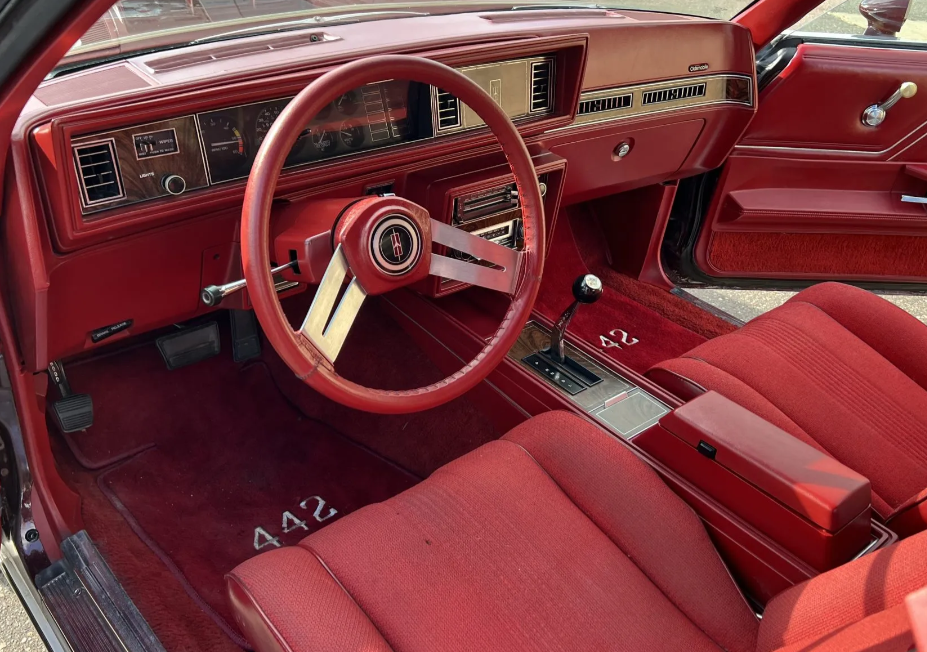
If you craved American luxury with a hint of European practicality, the Aeroback’s button-tufted interior with improved cargo access offered an unusual compromise. Inside, GM abandoned any pretense of European influence. The dashboard, controls, and seating could have been lifted from any American midsize – plush, button-tufted upholstery and woodgrain that fooled absolutely no one. It’s like wearing lederhosen with a cowboy hat – the mixed message was confusing.
Rear headroom suffered slightly from the sloping roofline. The hatchback design did provide improved cargo accesscompared to traditional trunks – the one genuinely useful aspect of the European inspiration. Materials and build quality matched other GM products, meaning “good enough for government work.”
Most buyers selected automatic transmissions because this was still America, darn it. Fuel economy depended entirely on engine choice, with V8 models sucking down gas like thirsty tourists at an all-inclusive resort. The market rendered its verdict quickly and harshly.
Buick sold fewer than 48,000 Century Aerobacks before retreating to traditional notchback designs in 1980, which promptly sold over 130,000 units. Message received: Americans liked their cars like their action movies – predictable and familiar.
2. 1978 Ford Fairmont – Exterior

Ford embraced right angles with an enthusiasm usually reserved for geometry teachers. The Fairmont’s sharp edges and flat surfaces created a car that looked like it was designed with nothing but a ruler. The front wore a simple grille flanked by rectangular headlights – styling that whispered rather than shouted.
Available in sedan, coupe (Futura), and wagon versions, the Fairmont maintained a consistent no-nonsense appearance across all variants. Exterior decoration remained minimal, creating a car that was essentially automotive wallpaper – present but not meant to be noticed.
Engine options covered the spectrum from a wheezy 2.3L four-cylinder to a respectable 5.0L V8. The new Fox platform delivered handling that shocked people who expected typical American land-yacht dynamics. This was a car you could actually steer without nautical references!
1978 Ford Fairmont – Interior
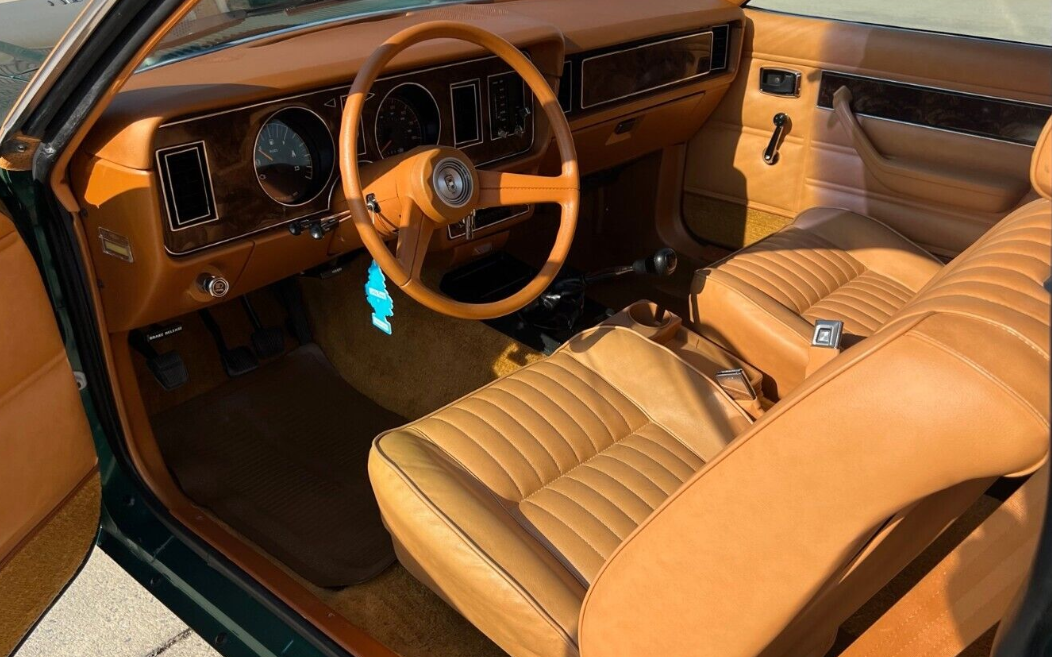
Smart interior packaging gave the compact Fairmont midsize roominess, proving that downsizing didn’t have to mean downgrading. The seating offered reasonable comfort without pretensions of luxury. The dashboard presented information clearly, like a teacher who speaks slowly to make sure you understand. Controls were placed where humans actually have hands – a revolutionary concept for ’70s Detroit.
The Fox platform’s efficient packaging created generous passenger space despite compact exterior dimensions. Storage included the usual suspects – glove box, door pockets, and not much else. Wagon versions excelled at cargo hauling with flat load floors when the seats folded.
Transmission choices included manuals and automatics, with four-cylinder models achieving impressive fuel economywhen most cars were environmental disasters. The Fairmont’s greatest legacy was its architecture – the Fox platform underpinned Mustangs for the next 25 years.
Though the Fairmont itself has been largely forgotten, its DNA lives on in automotive history. It’s like the character actor who never became famous but appeared in every important movie of the decade. A recent encounter with a Fairmont owner revealed the car’s enduring appeal: “Not exciting, but it moved my family across the country twice without drama. They don’t make honest cars anymore.”
1. 1978 Dodge Magnum – Exterior

Dodge created automotive muscle in leisure-suit era. The Magnum’s most distinctive feature? Hidden headlights behind clear covers that flipped down when activated – like a muscle car winking at you. Wide proportions and a long hood established a commanding road presence when most cars were shrinking.
Body details included subtle character lines and restrained chrome trim. The greenhouse featured a formal roofline with opera windows on some models because it was still the ’70s, and people apparently needed tiny windows that served no actual purpose.
Power came from various V8 engines, including a beefy 400 cubic inch (6.6L) option descended from the legendary 383. Despite sporting pretensions, the Magnum’s two-ton weight meant it moved like a linebacker rather than a sprinter. The overlooked muscle cars that had the power—but not the spotlight were often hiding in plain sight in Dodge’s lineup during this era. Handling was decent for something designed when Nixon was still in office.
1978 Dodge Magnum – Interior

For drivers who refused to sacrifice performance or comfort as the industry downsized, the Magnum’s cockpit-inspired interior balanced luxury touches with sporting intentions. Front bucket seats came standard, offering decent support during spirited driving (or what passed for it in the ’70s). The dashboard wrapped around the driver with aircraft-inspired controls and gauges that actually provided useful information.
Rear passengers enjoyed reasonable space for a personal luxury coupe. Interior materials quality exceeded Dodge’s usual offerings, with wood-grain accents that looked almost like they might have once seen a tree. Sound systems and climate controls represented the cutting edge of 1970s technology – which is to say they occasionally worked as intended.
Most Magnums came with automatic transmissions tuned for both performance and cruising. Fuel economy? Terrible, of course. The Magnum represented one of the last true American muscle coupes before fuel efficiency concerns and emissions regulations neutered performance.







